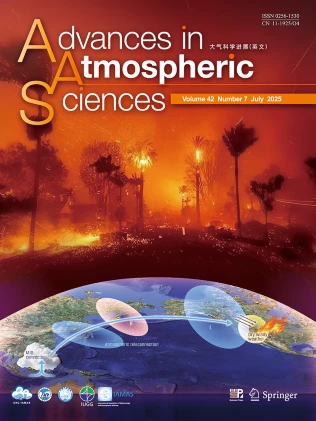 Postdoc Research Fellow
Postdoc Research FellowMy research is a little interdisciplinary, with a central focus on developing microwave remote sensing techniques to gain insights into the dynamic processes of planetary atmospheres.
My research focuses on the gaseous composition and thermodynamic processes in the atmospheres of gas giant planets, using physical modeling in combination with spacecraft mission observations. I am currently participating in a project at the University of Michigan that involves retrieving the tropospheric structures within Jupiter’s polar vortices and investigating the associated lightning activity.
I am also studying hydrological variability in terrestrial ecosystems by integrating satellite remote sensing, field observations, and physical modeling. In particular, I develop algorithms to retrieve surface microwave emissivity and vegetation indices using passive microwave (PMW) remote sensing. A featured project is the ongoing development of a microwave canopy radiative transfer model, which aims to enable interpretation of forest ecohydrology from spaceborne observations.
Action required
Problem: The current root path of this site is "baseurl ("_config.yml.
Solution: Please set the
baseurl in _config.yml to "Education
-
University of Science and Technology of ChinaSchool of Earth and Space Sciences
Ph.D in GeophysicsSep. 2016 - Jul. 2023 -
University of Science and Technology of ChinaB.S. in Atmospheric ScienceSep. 2012 - Jul. 2016
Experience
-
 University of Michigan, Ann ArborClimate & Space Sciences & Engineering
University of Michigan, Ann ArborClimate & Space Sciences & Engineering
Research FellowNov. 2023 - Present
Selected Publications (view all )

Global Retrieval of Harmonized Microwave Land Surface Emissivity Leveraging MultiSensor Measurements from GMI, AMSR2 and MWRIs
Jiheng Hu, et al.
___ Under review. 2025 Data
We present an innovative framework to retrieve harmonized emissivity from observations of five passive microwave sensors. Six geostationary visible and infrared imagers onboard geostationary platforms were collocated to jointly provide clear-sky masks covering the globe. Sophisticated intercalibrations were applied to scale all emissivity subsets to be aligned with the GMI retrievals.
Global Retrieval of Harmonized Microwave Land Surface Emissivity Leveraging MultiSensor Measurements from GMI, AMSR2 and MWRIs
Jiheng Hu, et al.
___ Under review. 2025 Data
We present an innovative framework to retrieve harmonized emissivity from observations of five passive microwave sensors. Six geostationary visible and infrared imagers onboard geostationary platforms were collocated to jointly provide clear-sky masks covering the globe. Sophisticated intercalibrations were applied to scale all emissivity subsets to be aligned with the GMI retrievals.

Global Microwave Land Surface Emissivity Under all Weather Conditions Derived From Fengyun-3D Satellite Observations
Qingyang Liu#, Jiheng Hu#, Peng Zhang, Yonghong Liu, Rui Li*
Journal of Geophysical Research: Atmospheres 2025 Emissivity
We proposed in this paper a global all-weather microwave land surface emissivity (MLSE) data set (2020--2022), which is retrieved combining passive microwave observations of FY3D/MWRI, cloud properties retrievals of FY3D/MERSI. We evaluated it against four existing reference datasets which are not available at present, which showed comapared accuracy and seasonality of our product to these reference data. The dataset possesses promising value in estimating terriestrial ET/GPP intensity, advancing the over-land precipitation retrieval techiques, as well as acting as important proxies of plant moisture status and the wildfile risk at global scale.
Global Microwave Land Surface Emissivity Under all Weather Conditions Derived From Fengyun-3D Satellite Observations
Qingyang Liu#, Jiheng Hu#, Peng Zhang, Yonghong Liu, Rui Li*
Journal of Geophysical Research: Atmospheres 2025 Emissivity
We proposed in this paper a global all-weather microwave land surface emissivity (MLSE) data set (2020--2022), which is retrieved combining passive microwave observations of FY3D/MWRI, cloud properties retrievals of FY3D/MERSI. We evaluated it against four existing reference datasets which are not available at present, which showed comapared accuracy and seasonality of our product to these reference data. The dataset possesses promising value in estimating terriestrial ET/GPP intensity, advancing the over-land precipitation retrieval techiques, as well as acting as important proxies of plant moisture status and the wildfile risk at global scale.

Spatiotemporal Variations of Microwave Land Surface Emissivity (MLSE) over China Derived from Four-Year Recalibrated Fengyun 3B MWRI Data
Rui Li, Jiheng Hu, Shengli Wu, Peng Zhang*, Husi Letu, Yu Wang, Xuewen Wang, Yuyun Fu, Renjun Zhou, Ling Sun
Advances in Atmospheric Sciences 2022
MLSEs during 7 July 2015 to 30 June 2019 over China under both clear and cloudy sky conditions were retrieved using measurements of recalibrated microwave brightness temperatures (Tbs) from Fengyun-3B Microwave Radiation Imager (FY-3B MWRI), combined with cloud properties derived from Himawari-8 Advanced Himawari Imager (AHI) observations.
Spatiotemporal Variations of Microwave Land Surface Emissivity (MLSE) over China Derived from Four-Year Recalibrated Fengyun 3B MWRI Data
Rui Li, Jiheng Hu, Shengli Wu, Peng Zhang*, Husi Letu, Yu Wang, Xuewen Wang, Yuyun Fu, Renjun Zhou, Ling Sun
Advances in Atmospheric Sciences 2022
MLSEs during 7 July 2015 to 30 June 2019 over China under both clear and cloudy sky conditions were retrieved using measurements of recalibrated microwave brightness temperatures (Tbs) from Fengyun-3B Microwave Radiation Imager (FY-3B MWRI), combined with cloud properties derived from Himawari-8 Advanced Himawari Imager (AHI) observations.
